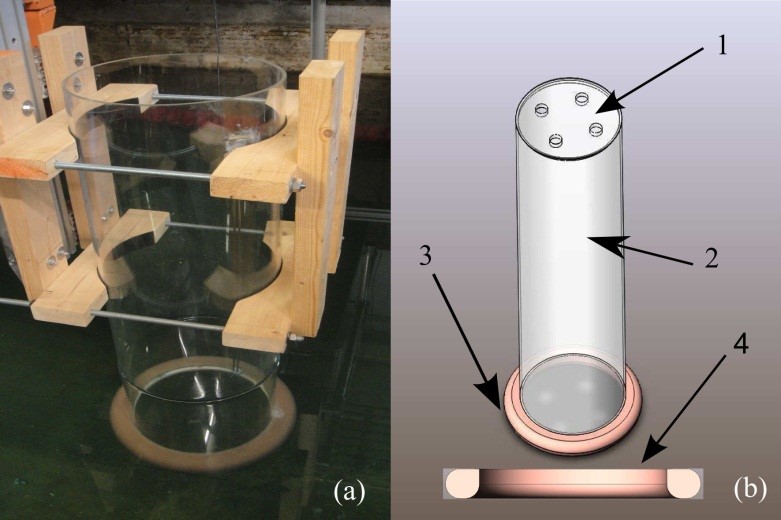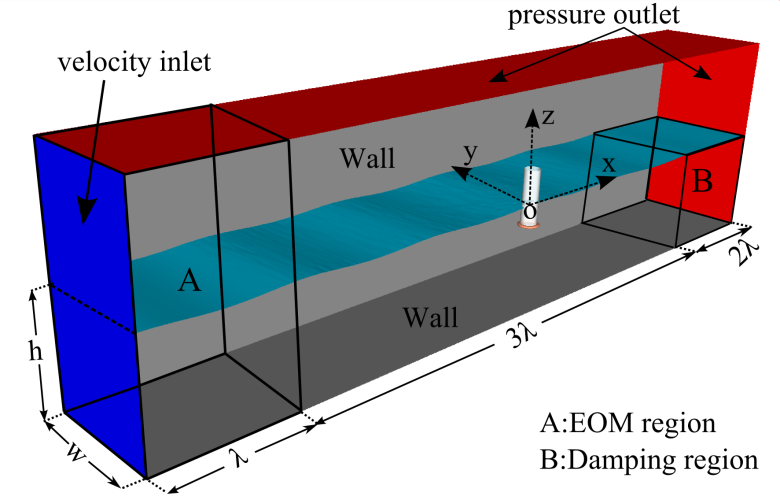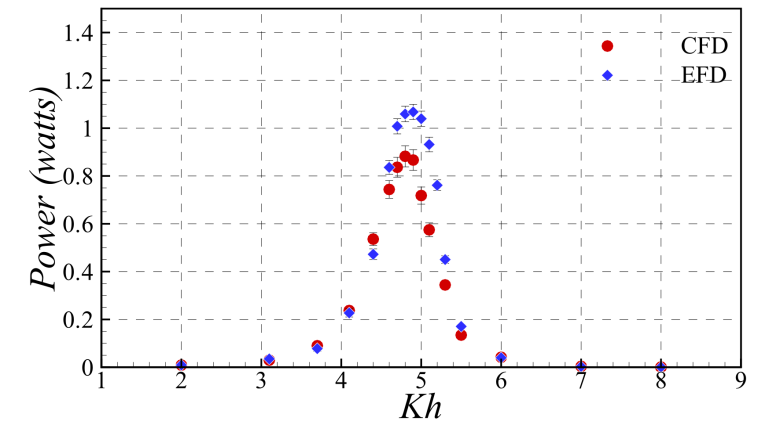CFD & FSI-RG
Computational Fluid Dynamics &
Fluid Structure Interaction
Research Group
qing.xiao@strath.ac.uk +44 (0)141 548 4779
Computational Fluid Dynamics &
Fluid Structure Interaction
Research Group
qing.xiao@strath.ac.uk +44 (0)141 548 4779
CFD and EFD Assessment of Oscillating Water Column Wave Energy Device
This project aims to develop experimental and numerical (CFD) methodologies to assess the performance of a wave energy converter (WEC) using the Oscillating Water Column (OWC) technology. By using the validated methodology, the tank width effect and scale effect on the performance of the OWC device are also investigated through both experiment and CFD.
The experiment was carried out in the Kelvin Hydrodynamic lab of University of Strathclyde. The CFD simulation was achieved by using commercial FVM package Star-ccm+. Figure 1 shows the comparison between the physical model and numerical model. A reflection free numerical wave tank (Figure 2) is developed by using Euler overlay Method (EOM) to mimic the active absorbing wave maker in the Kelvin Hydrodynamic tank. The power captured by the OWC device in the tank and that calculated by CFD are compared in Figure 3.



Please refer to:
Dai S, Day S, Xiao Q. An experimental and analytical investigation on the hydrodynamic efficiency of a cylindrical oscillating water column wave energy device. ICMT2014, 7th-9th July 2014, Glasgow, UK
Copyright © 2014 - All Rights Reserved - University of Strathclyde CFD & FSI-RG